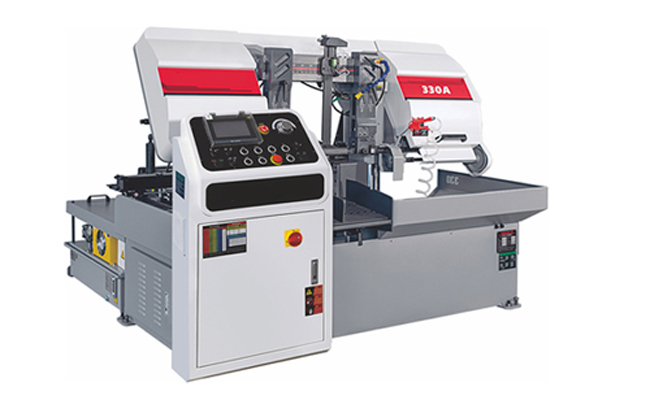HS7150 Hydraulic Hack Saw
Cutting Capacity :
Band saw machines are essential tools in woodworking, metalworking, and various industrial applications. Whether you’re a professional craftsman or a DIY enthusiast, understanding the different types of band saws and their uses can help you choose the right one for your projects.
What Is a Band Saw Machine?
A band saw is a power tool that uses a continuous, toothed metal blade to make precise cuts in wood, metal, and other materials. The blade runs on two or more wheels, allowing for straight, curved, or irregular cuts with high accuracy.
Types of Band Saw Machines
Band saws come in different designs, each suited for specific tasks. Here are the most common types:
1. Vertical Band Saws
Best for: Woodworking, intricate cuts, and resawing.
Features: The blade runs vertically, and the workpiece is moved by hand or with a guide.
Uses: Cutting curves, detailed shapes, and resawing thick lumber into thinner pieces.
2. Horizontal Band Saws
Best for: Metal cutting and industrial applications.
Features: The blade runs horizontally, and the machine uses gravity or hydraulic pressure to cut through materials.
Uses: Cutting metal bars, pipes, and large stock into smaller sections.
3. Benchtop Band Saws
Best for: Small workshops and hobbyists.
Features: Compact and portable, mounted on a workbench.
Uses: Light-duty cutting tasks, small woodworking projects, and model making.
4. Floor-Standing Band Saws
Best for: Heavy-duty industrial and professional use.
Features: Larger and more powerful than benchtop models, with greater cutting capacity.
Uses: Cutting thick materials, large-scale woodworking, and metal fabrication.
5. Metal-Cutting Band Saws
Best for: Cutting metals like steel, aluminum, and brass.
Features: Slower blade speed and specialized blades to handle tough materials.
Uses: Metal fabrication, automotive repairs, and industrial manufacturing.

6. Wood-Cutting Band Saws
Best for: Woodworking projects.
Features: Higher blade speed and wider blades for smooth cuts in wood.
Uses: Furniture making, cabinetry, and crafting.
7. Portable Band Saws
Best for: On-site cutting and construction work.
Features: Handheld and battery-powered or corded for mobility.
Uses: Plumbing, electrical work, and cutting metal or PVC pipes.
Choosing the Right Band Saw
When selecting a band saw, consider the following factors:
Material: Will you be cutting wood, metal, or both?
Blade Size & Type: Wider blades are better for straight cuts, while narrow blades handle curves well.
Throat Capacity: Determines the maximum width of the material you can cut.
Motor Power: More horsepower is needed for dense materials like metal.
Portability: Benchtop and portable saws are great for small spaces, while floor models offer stability for heavy-duty work.
Woodworking: Cutting curves, resawing lumber, and making veneers.
Metalworking: Cutting pipes, bars, and sheets with precision.
DIY Projects: Crafting custom shapes, models, and repairs.
Industrial Applications: Large-scale fabrication and manufacturing.
Band saws are versatile machines that can handle a wide range of cutting tasks. Whether you need a compact benchtop model for small projects or a heavy-duty floor-standing saw for industrial work, there’s a band saw to fit your needs. By understanding the different types and their uses, you can make an informed decision and get the most out of your machine.
Cutting Capacity :
Cutting Capacity :